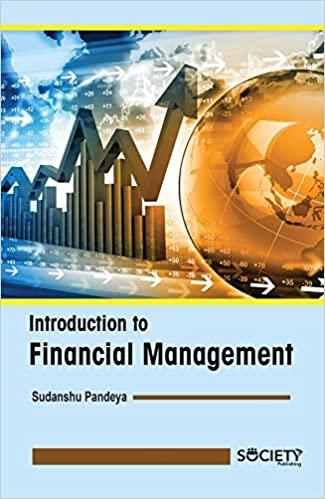13/03/2017 Project on Mathematics of Finance (Chapter 5). 10. A woman is selling some land, and she will be paid a lump sum of $80,000 in 14 years. Until then, the buyer pays 9% simple interest quarterly. (a) Find the amount of each quarterly interest payment. (b) The buyer sets up a sinking fund so that enough money will be present to pay off the $80,000. The buyer wants to make semiannual payments into the sinking fund, the account pays 5% compounded semiannually. Find the amount of each payment into the fund. (a) The amount of each quarterly interest payment is $ (Round to the nearest dollar as needed.) (b) The buyer needs to make semiannual payments of $ (Round to the nearest cent as needed.) ID: Bus Econ 5.3.51 11. When Joe and Sarah graduate from college, each expects to work a total of 45 years. Joe begins saving for retirement immediately. He plans to deposit $550 at the end of each quarter into an account paying 7.3% interest, compounded quarterly, for 12 years. He will then leave his balance in the account, eaming the same interest rate, but make no further deposits for 33 years. Sarah plans to save nothing during the first 12 years and then begin depositing $550 at the end of each quarter in an account paying 7.3% interest, compounded quarterly for 33 years. Complete parts (a) through (e) below. a. Without doing any calculations, predict which one will have the most in his or her retirement account after 45 years. Then test your prediction by answering the following questions. Choose the correct answer below. O A. Sarah will have more in her account after 45 years. Sarah contributed more overall, so she will have more money in her account. OB. Both Joe and Sarah will have the same amount of money in their accounts because they were both earning 7.3% interest on their money for 33 years. O c. Sarah will have more in her account after 45 years. Joe eamed interest for 12 more years than Sarah, but Sarah contributed monthly payments for a lot longer than Joe. O D. Joe will have more in his account after 45 years. Sarah contributed more money overall, but Joe was earning 7.3% interest per quarter for 33 years. b. How much will Joe contribute to his retirement account? (Round to the nearest dollar.) c. How much will be in Joe's account after 45 years? (Round to the nearest dollar.) d. How much will Sarah contribute to her retirement account? (Round to the nearest dollar.) e. How much will be in Sarah's account after 45 years? (Round to the nearest dollar.) ID: Bus Econ 5.3.55







